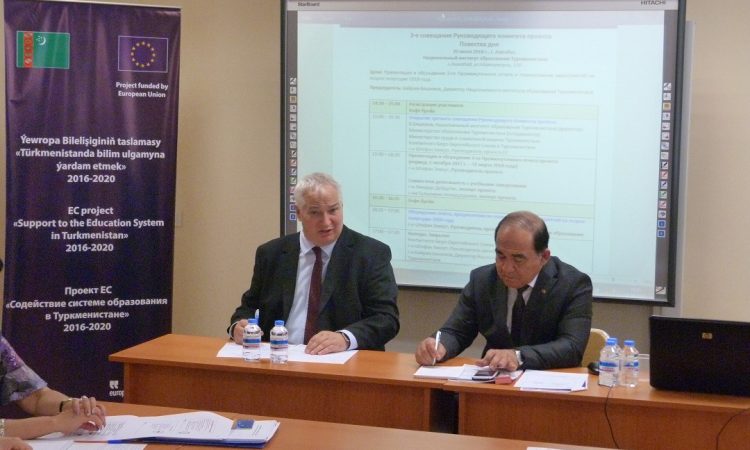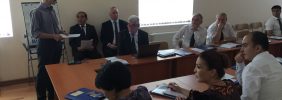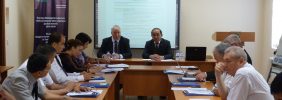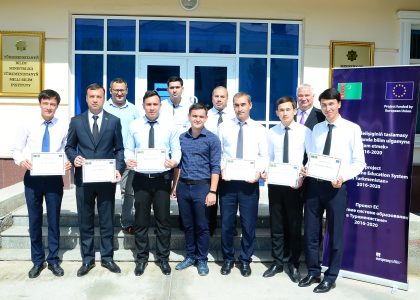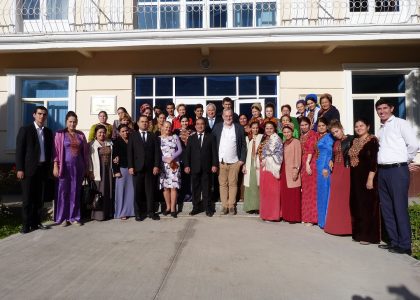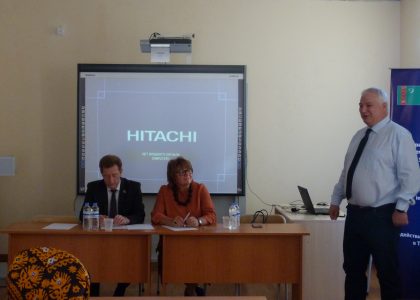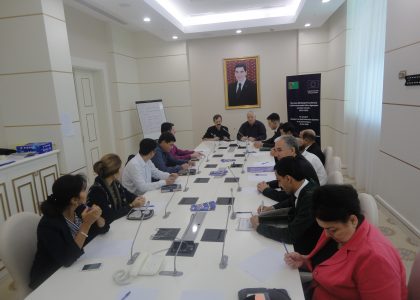Ashgabat, 2018. On June 20th, the EU funded project’s “Support to the Education Sector of Turkmenistan” Steering committee, the main decision-making body, held its third meeting, keeping to its bi-annual schedule. The chairman, Mr Byashimow, and 15 members from Ministries and organisations discussed results of the reporting period from October 2017 to April 2018 and addressed upcoming challenges for the remaining time of project implementation.
Since the start of the project in October 2017, the project underwent a steep learning curve on how to implement more than 30 activities of the Terms of Reference. If the complexity of cultural and socio-economic background is taken into account, there is no technocratic blueprint to be implemented linearly. A successful implementation approach requires careful strategic design and skilful application – not to mention plenty of good luck – guided by a nuanced understanding of a myriad of factors on the ground. In the beginning, an unavoidable trial and search process aimed to understand circumstances, context, informal institutions, rules and norms. The lesson learnt was that what cannot be done should not be attempted. Consequently, the focus shifted to issues of concern that could be managed. Ongoing efforts are framed by the need to contribute to the capacity creation of the beneficiary while playing according to existing rules, processes and procedures to get things done.
During reporting period, twelve major events manifested a significant increase of activities, such as a joint seminar with ETF, functional analysis of the National Institute of Education and the English-speaking Humanitarian university, work on setting-up sector councils, seven mini-projects, a strategic workshop, seminars for further education of teachers on active learning methods, English and the Bologne process and the development of websites. For the first time, a 280 hours blended learning course for 46 IT administrators of the Learning Management System Moodle started a dialogue with the community. In total, there were 13 training events, 51 days of training and 1,494 participant-days of learning.
The emerging implementation approach, as presented during the meeting, has two dimensions: First, a bottom-up approach of ToR compliant activities that are ignited by the community. The project contributes through technical assistance and consultancy. It is a preliminary version of a grant mechanism, common all over the world. Second, top-down activities that are implemented in close cooperation with the beneficiary and under his direct supervision.
During a one-hour discussion, more topics were addresses, such as quality of education, capacity creation for labour market analysis at the Ministry of Labour, including the need to appoint a coordinator for upcoming activities, and the contribution of the project to the implementation of two national concepts in digitalisation of teaching and learning a foreign language.
The evolving and strengthening consensus is that the project has found its niche in the educational landscape. If the project increases activities as decided by the Steering Committee, it is on track to achieve the given objectives.
